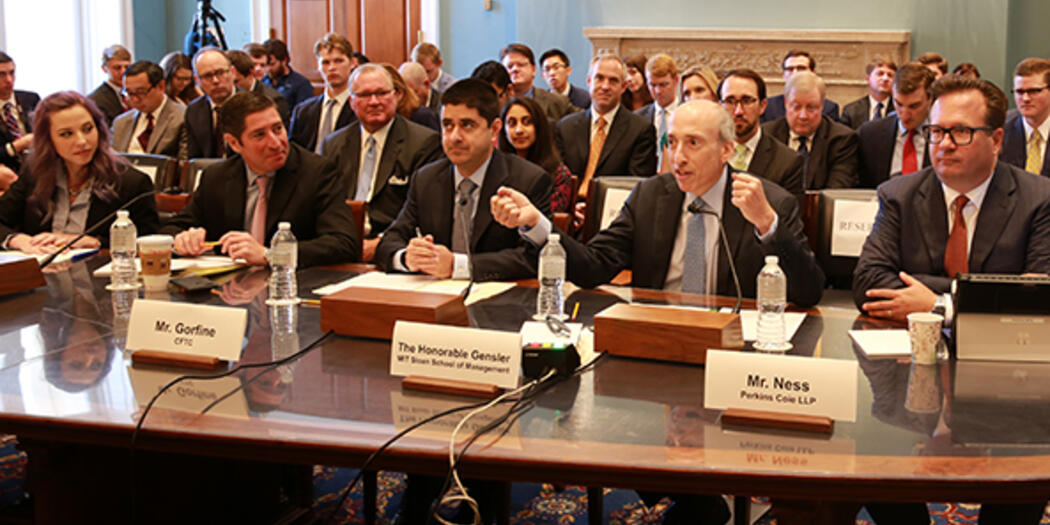Technology
Here’s what MIT students will learn in the new 'Blockchain and Money' class
By
Although there are still plenty of technical and commercial challenges yet to be resolved with blockchain technology, tremendous potential remains for it to transform the financial sector.
That’s why this fall, MIT’s Gary Gensler — whose career spans both Wall Street and public service — will teach a new course that shows students how to use the technology. The class will cover most of the fundamentals, such as distributed ledgers and smart contracts, in addition to real-world examples and the thorny global issues that make headlines every day, such as regulatory concerns.
A senior lecturer at MIT Sloan and a senior adviser at the MIT Media Lab, Gensler said there are plenty of reasons for students to delve into the world of blockchain.
“This technology has real potential as a catalyst for change in the world of finance and the broader economy,” said Gensler, who is also the former chairman of the Commodity Futures Trading Commission and testified recently on cryptocurrencies before the House Agriculture Committee [PDF].
Gary Gensler testifies about cryptocurrencies July 18 at the House Agricultural Committee.
Gary Gensler testifies about cryptocurrencies July 18 at the House Agricultural Committee.
The material in Gensler’s 12-week course, “Blockchain and Money [PDF],” will be of interest not just to MIT Sloan entrepreneurs who are interested in funding mechanisms such as initial coin offerings, but also for students in the general MIT community who are curious about the intricacies of blockchain.
Part one: The foundation of blockchain
Bitcoin. It’s what most people think of when they hear the word cryptocurrency. Gensler’s course will take an in-depth look at the history of bitcoin and the related questions that this first and most widely used virtual currency has raised about the nature of money. Students will read “Bitcoin: A Peer-to-Peer Electronic Cash System [PDF]” by Satoshi Nakamoto, the name used by the unknown individual or group behind the development of bitcoin. Although many currencies face regulatory scrutiny, Gensler has said that bitcoin should remain exempt.
Gensler will also discuss smart contracts in open sourced and private applications as well as distributed ledgers, the “really critical piece” of blockchain technology.
Also up for discussion are the numerous public policy issues that arise with cryptocurrencies, from ensuring financial stability to protecting investors from scams, topics that Gensler has previously spoken about.
Part two: Practical applications in the financial sector
Gensler views his class as a “real how-to course” that is more focused on real-world application than theory. The course will focus mostly on blockchain applications in the financial industry, given that the technology is typically used in finance around 90 percent of the time, he said.
Gensler wants students to think creatively about blockchain application in the real world. Part of the course will require students to work together in groups on a final project of their choice, where they can devise their own original blockchain opportunity. Students will have the opportunity to work on this final project in conjunction with the Digital Currency Initiative, a part of the MIT Media Lab focusing on cryptocurrencies and blockchain technology.
Gensler will also spend part of the course discussing the potential use cases for blockchain technology across payment systems in the U.S., China, Kenya, the U.K., and other countries. Venture capital and initial coin offerings will also receive airtime, as “they’re where the entrepreneurial drive is.”
By the end of the course, Gensler hopes students will have an appreciation for the technology as well as knowledge of its shortcomings because “there’s still a lot of commercial and technological challenges.”
Commentary from industry experts
Gensler is still putting the finishing touches on his syllabus, and while the class won’t be heavy on guest speakers, he still plans to tap into the MIT community for commentary. He said crypto expert Christian Catalini would be a welcome addition, as would MIT’s Simon Johnson; Michael Casey, author of “The Truth Machine” and “The Age of Cryptocurrency;” Neha Narula, the director of MIT’s Digital Currency Initiative; or Kristin Forbes, for a session exploring blockchain and central banking. Gensler has also asked Jeff Sprecher, the CEO of Intercontinental Exchange and chairman of the New York Stock Exchange, to visit the class.
In addition, every Tuesday night during the semester, there will be a blockchain seminar hosted by Johnson and other crypto experts, and it will be open to everyone in the MIT community.
“There are very few institutions in the world that can compete with the depth of talent that MIT has in the crypto space,” Gensler said. “I view the course as one piece of the broader ecosystem at MIT where people can explore blockchain technology and its real-life possibilities.”




